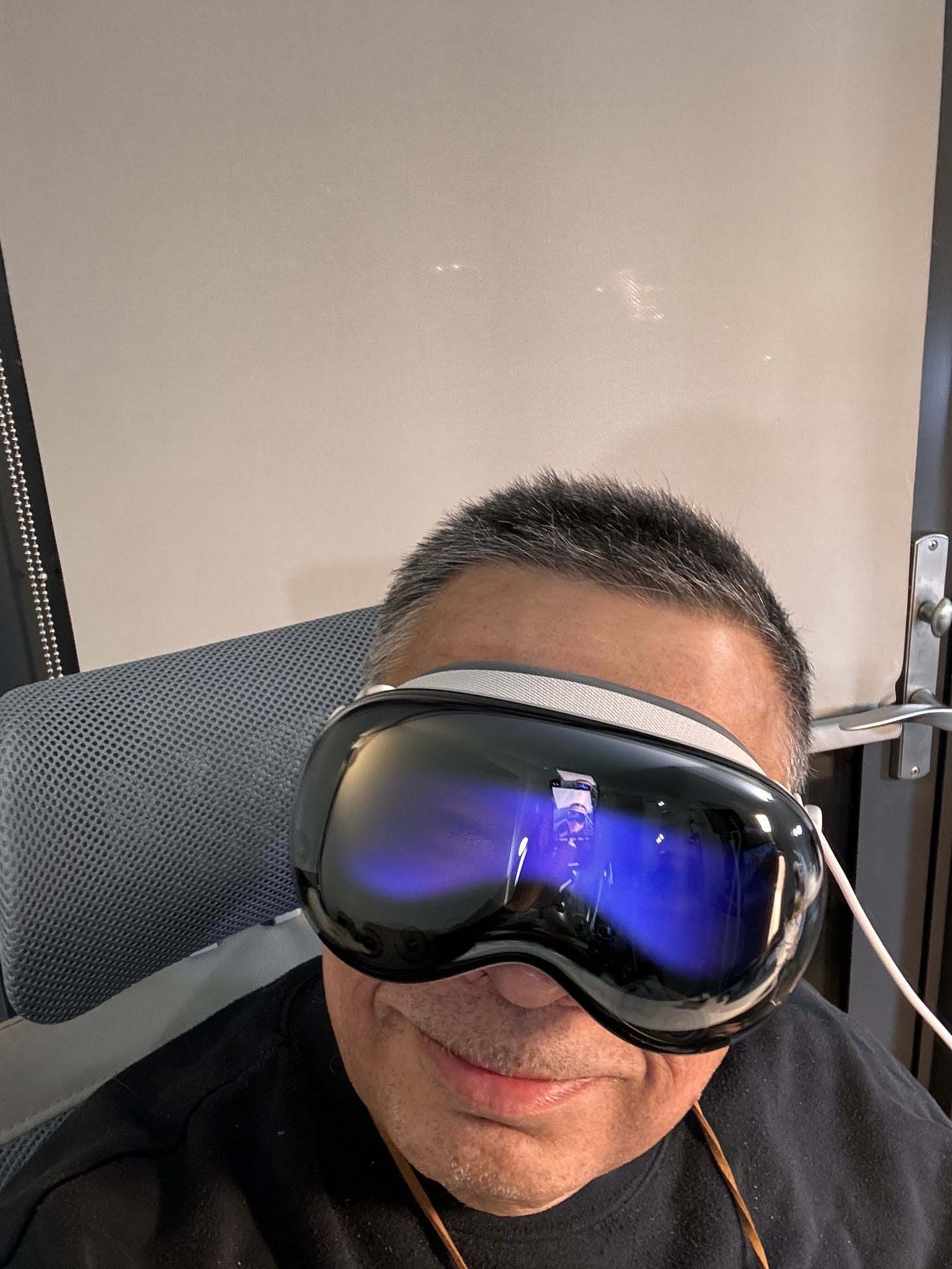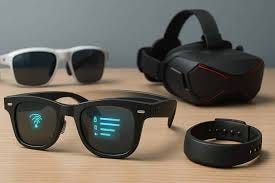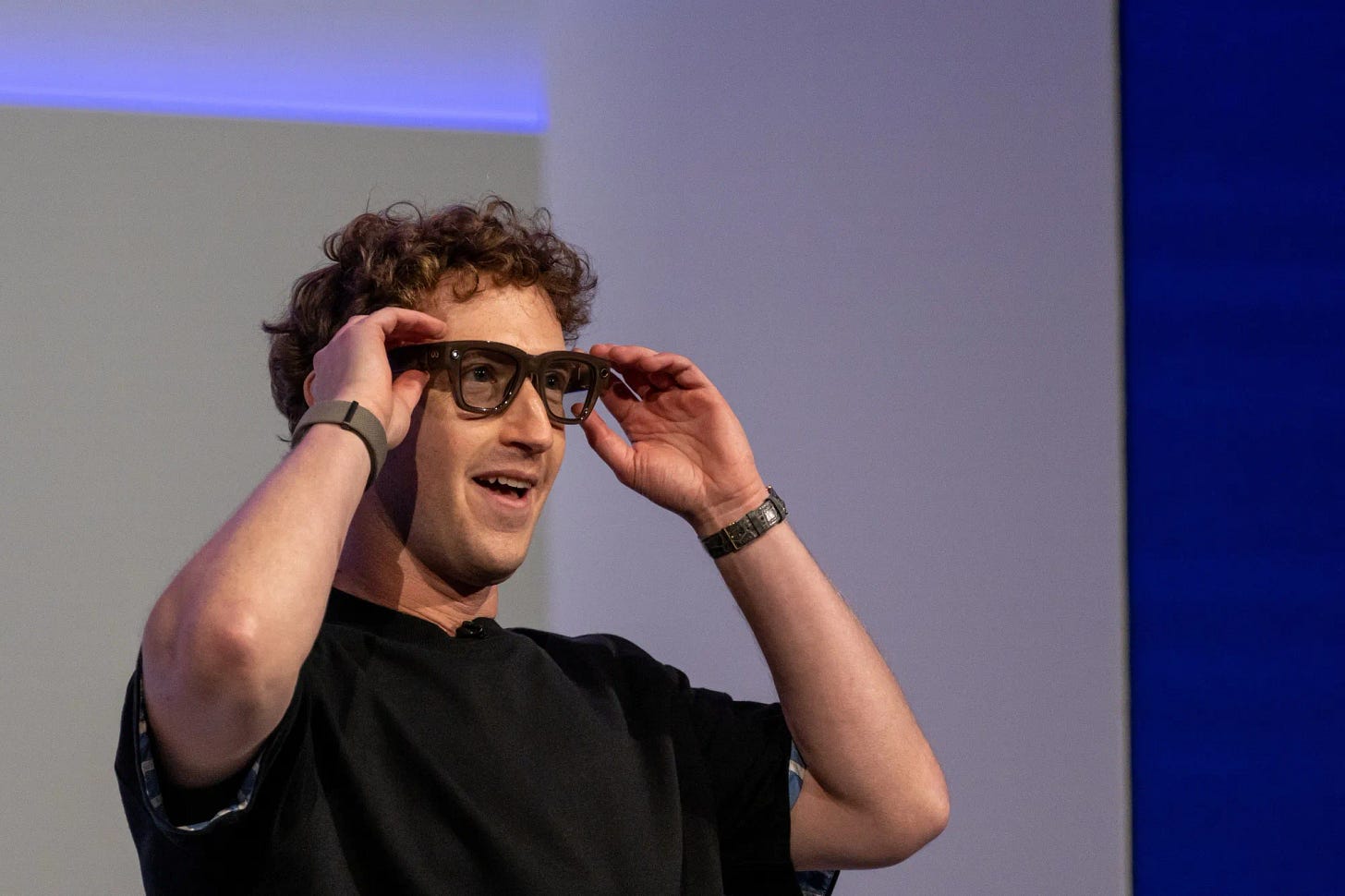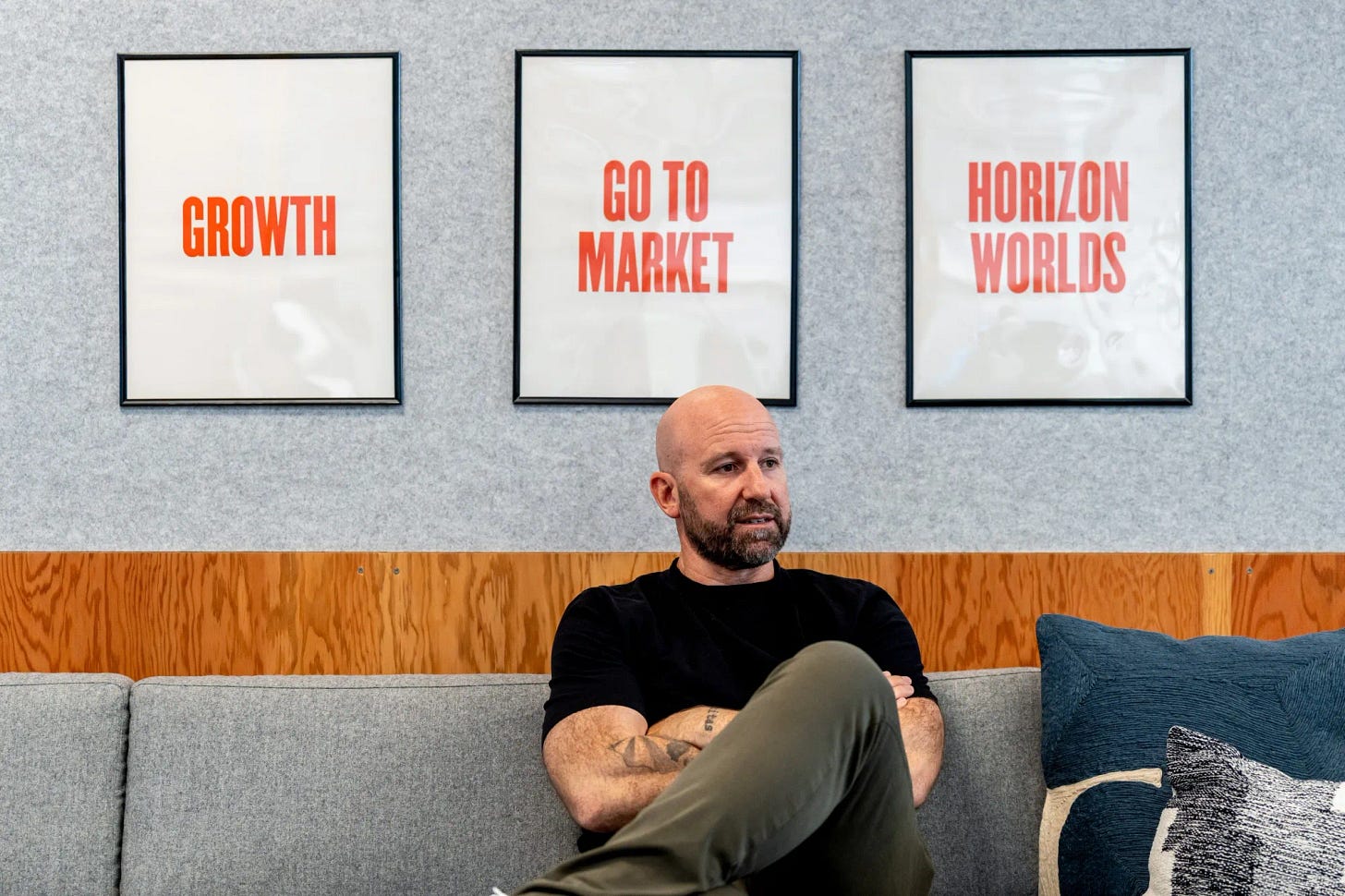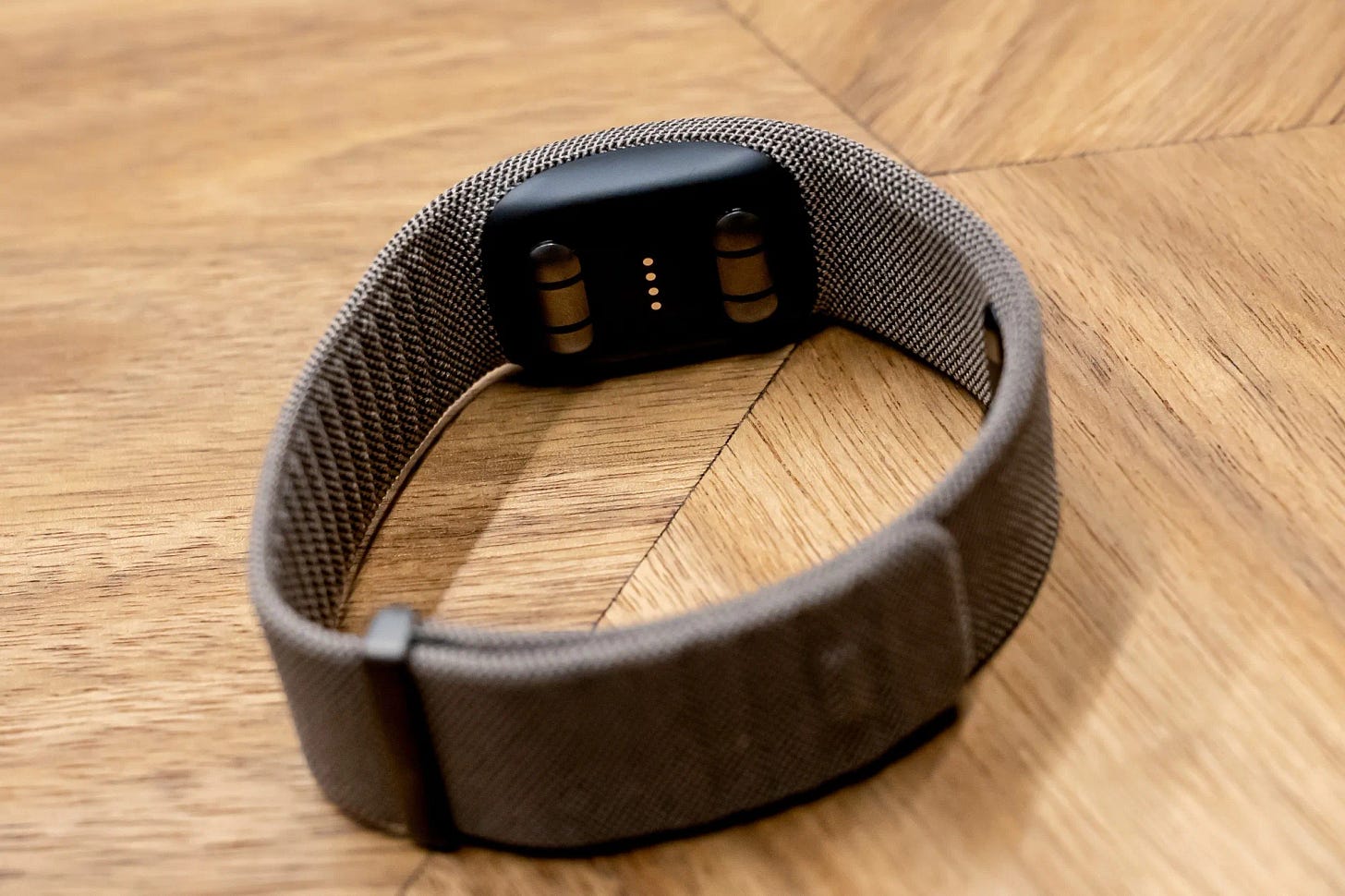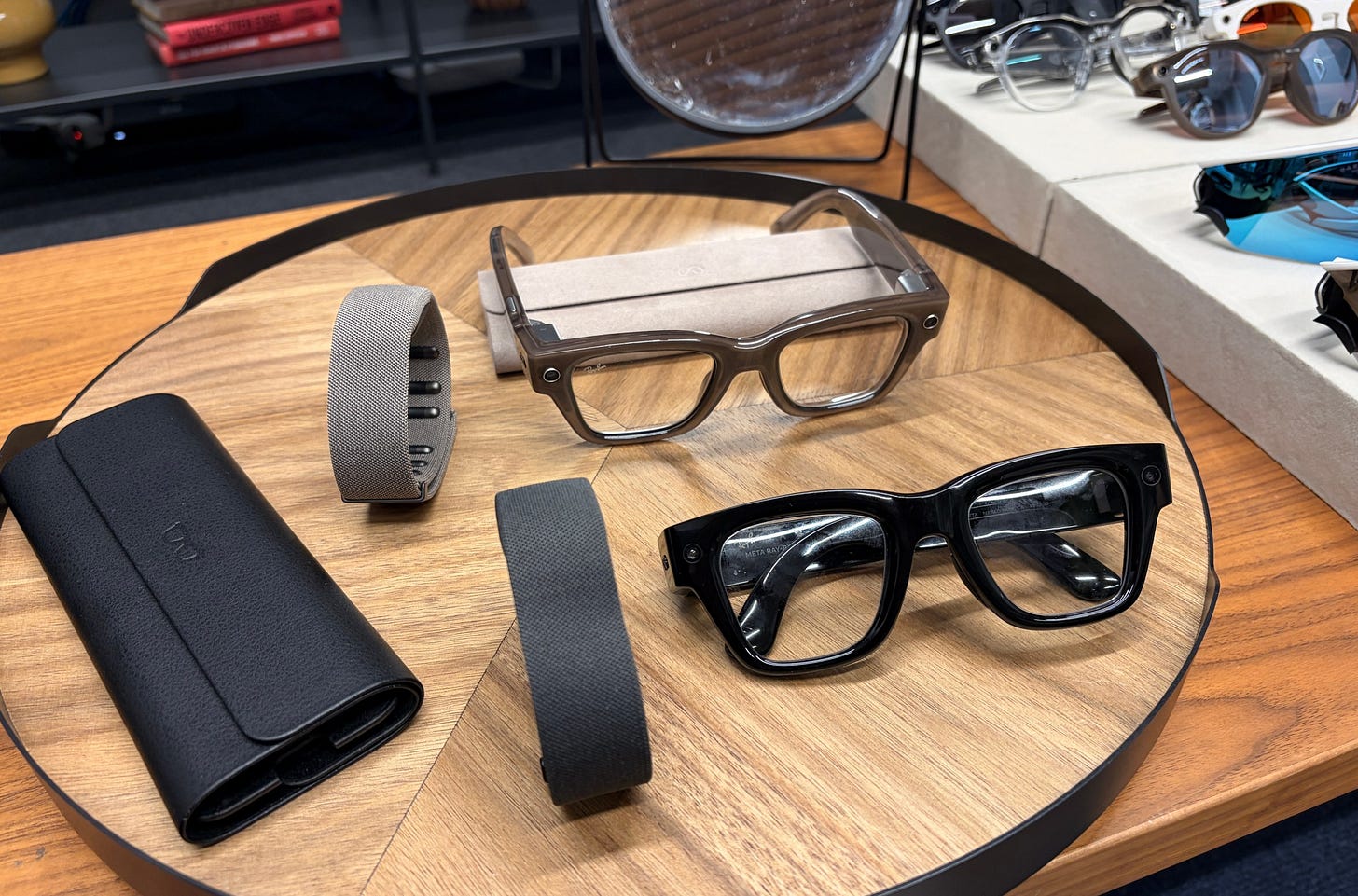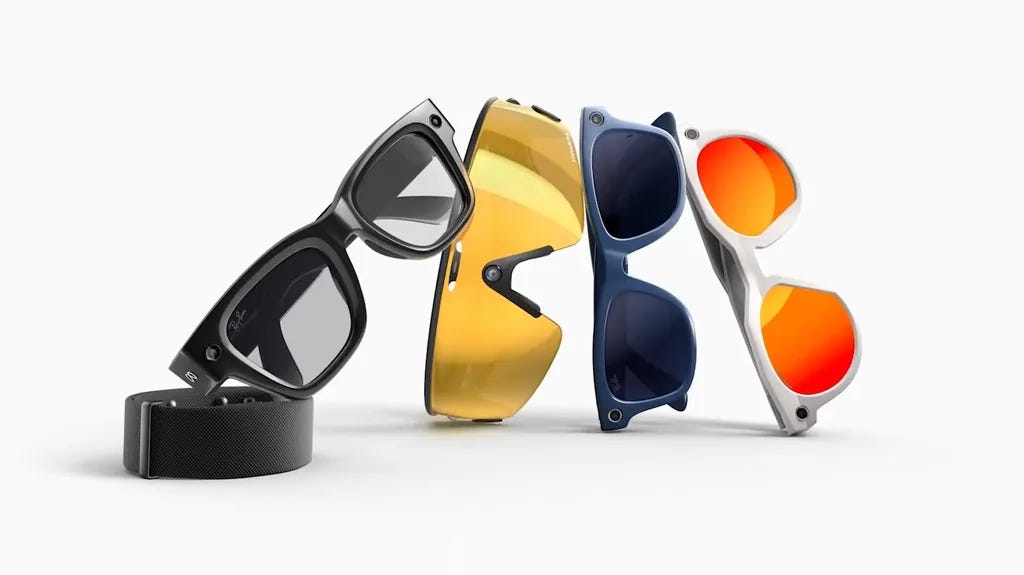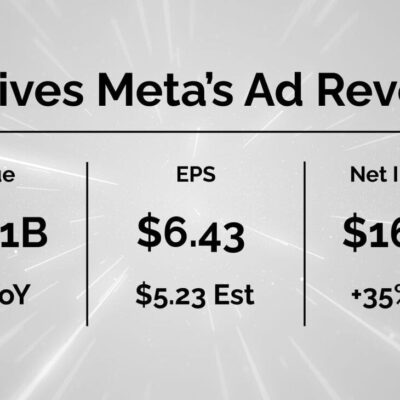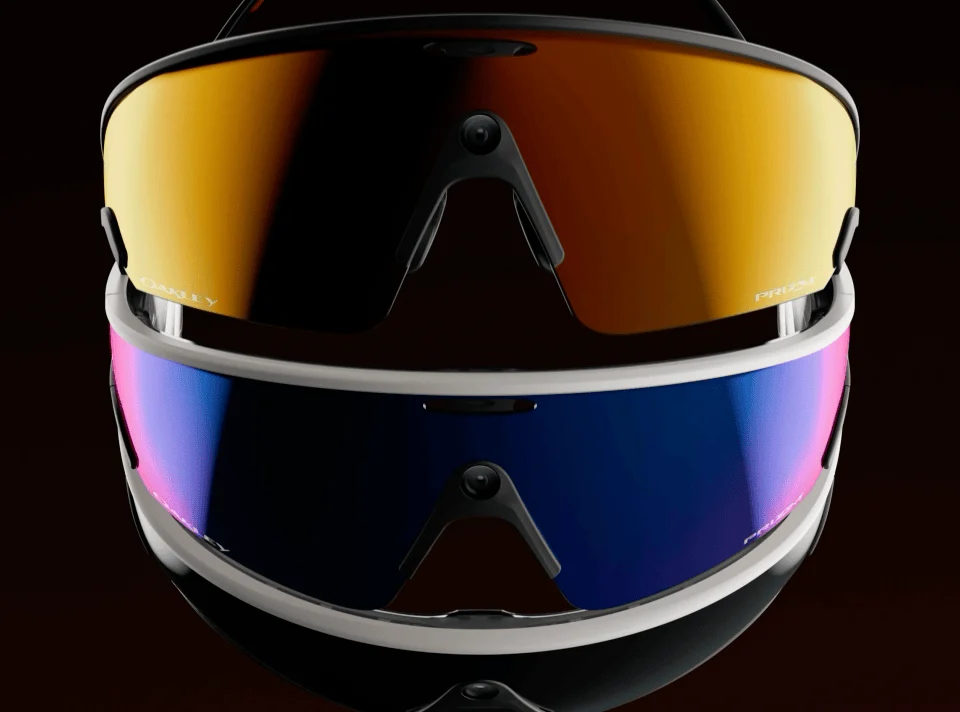
AI: Meta leans in on AI Smart Glasses 'Science Projects'. RTZ #849
Yesterday was Meta to show of it latest fleet of smart glasses at Meta Connect, with hyper AI focused Founder/CEO Mark Zuckerberg on stage doing live demos of the latest tech. The ‘demo gods’ were not with him, with a number of the demos not working in front of a large audience with bated breath.
Nevertheless, he and Meta did manage to impress the world with their collective commitment to Meta’s Smart Glasses/AR Glasses, (aka ‘Science Project’) I’ve written about at length. And it’s a journey I’ve been excited about, long before Ray-Ban Smart Glasses and Apple Vision Pros. But with eyes wide open.
I do think it will take longer than the consensus projected 2-3 years for mainstream adoption in the hundreds of millions and beyond like smartphones. Likely most of this decade at least.
But first, let’s review what was discussed.
Bloomberg summarizes the proceedings well in “Meta Launches $799 Glasses With Screen and AI Integration”:
“Meta Platforms Inc. unveiled its first smart glasses with a built-in screen, the $799 Meta Ray-Ban Display, which features a screen in the right lens and can show text messages, video calls, and visual results from queries to Meta’s AI service.”
“The glasses introduce a new control system, including hand gestures detected by a neural wristband, and offer features such as live captioning, video calling, and music playback.”
“The Meta Ray-Ban Display will go on sale on Sept. 30, and Meta is also launching new screen-free models, including an updated version of its standard smart Ray-Bans and a new offering under the Oakley brand.”
The plan is to sell at least a 100,000 of these bulkier glasses to early adopters. Despite their appearance, they’ve managed to cram in over 20 grams of cool tech into glasses that otherwise would weigh just 45 grams.
By comparison, note that the just introduced ‘super thin and super light’ Apple iPhone Air is a relatively weighty 165 grams. And that compares to over 233 grams for Apple’s flagship and largest Apple 17 Pro Max. The Samsung flaship S25 Ultra comes in at 218 grams.
I talk about these weights, because the tech is getting closer to our person and climbing onto our faces. And will be competing vigorously for our attention millimeters away from our eyeballs. Not to mention ambiently capturing and recording everything going on about us with audio/video sensors.
Back to Meta Connect, it’s quite the fleet of smart glasses:
“Meta is seeking to turn its smart glasses lineup into a must-have product, on Wednesday unveiled its first version with a built-in screen.”
“The latest model, the $799 Meta Ray-Ban Display, features a screen in the right lens. It can show text messages, video calls, turn-by-turn directions in maps and visual results from queries to Meta’s AI service. The subtly integrated display can also serve as a viewfinder for the camera on a user’s phone or surface music playback.”
“Speaking at the company’s annual Meta Connect event, Chief Executive Officer Mark Zuckerberg said Meta’s future glasses will be a vehicle for “superintelligence,” a term he has adopted to describe advanced artificial intelligence development and the name of a team inside the company.”
Mark Zuckerberg is of course expending billions in assembling an AI Researcher ‘super-team’ that I’ve discussed at length. And their efforts get delivered via these glasses as well, over time. With Meta peers in lock-step investments.
Bloomberg continues:
“For smart glasses — or AI glasses, as Meta now calls them — a display is key. The addition, over time, could allow consumers to offload some functionality to their eyewear that they would normally expect their phones to handle.”
“In an interview ahead of their launch, Chief Technology Officer Andrew Bosworth called the new glasses “the first serious product” in the space. This launch is a key part of Meta’s effort to build its own consumer electronics ecosystem, positioning itself against rivals like Apple Inc. and Alphabet Inc.’s Google. Since debuting its first virtual reality headset in 2016, Meta has aimed to attract users away from the dominant platforms.”
“This feels like the kind of thing where you can start to keep your phone in your pocket more and more throughout the day,” Bosworth said. He added that the phone isn’t going away, but glasses offer a more convenient way to access its most popular features.
“The glasses introduce a new control system. While users can still swipe along the frame as with previous models, the primary interface is now hand gestures, detected by a neural wristband strapped around the wearer’s dominant hand.”
“The user can select items by pinching their thumb and index finger, swipe through items by sliding a thumb across their gripped hand, double tap their thumb to invoke Meta’s AI voice assistant, or twist their hand mid-air to adjust music volume and other controls.”
“The new glasses will go on sale Sept. 30 and will include the wristband. Meta is offering two sizes and two color options: black and a brown shade called sand. They will be sold by EssilorLuxottica SA’s Ray-Ban, Lenscrafters International Inc., Best Buy Co. and a limited number of Verizon Communications Inc. locations.”
“At launch, they’ll support apps like Facebook Messenger, WhatsApp and a music app powered by Spotify Technology SA. The Instagram app will initially only support direct messages, but Meta plans to add Reels viewing later this year.”
“The glasses’ display offers a limited 20-degree field of view with a resolution of 600 x 600 pixels. Its brightness ranges from 30 to 5,000 nits, providing decent visibility in most outdoor conditions, though it can struggle in the brightest sunlight. Some prescriptions are supported, but only as a built-to-order option.”
The whole piece is worth reading to get the range of possibilities with this and other less expensive smart glasses introduced by Meta.
The current of Meta glasses to come this year alone range in capabilities and price from $399 to over $799. The four models below would collectively be almost $2000 this year alone. For early generations of rapidly improving hardware and software.
For that price one could get BOTH a top of the line Apple iPhone 17 Pro Max, AND the fashionable iPhone Air, and be done with the constant reviewer debates over which one to pick.
The company had hordes of tech reviewers and influencers try the various glasses in well orchestrated and choreographed one-on-one presentations.
And the feedback was again very positive and at times effusive over the technologies to come. Much like the ‘Orion’ AR glasses presentations a few months ago. Those glasses are still in the developmental pipeline, and are years away to bring the technologies down to affordable levels from tens of thousands a pair today.
However, Meta’s technical prowess is very impressive, especially the new ‘Neural band’ wrist wearable that sends signals from your fingers and muscles to your brain.
It is a UI innovation with much promise beyond glasses on one’s face. But for now they’re tied to Meta’s silo of its smart glass fleet to come. And unclear if third party developers will have access to developing cool applications, functions and services off that just platform. Not to mention the complex societal acceptance and privacy issues ahead with these new technologies.
It’s exciting to see Mark Zuckerberg in total ‘Founder Mode’, investing hundreds of billions in this AI Tech Wave, from soup to nuts. From core LLM AI models, to the data center infrastructure, to the pricey AI talent, to the delivery mechanism of AI Smart Glasses, and of course the AI applications and services at the top of that tech stack below.
And to also see other big tech companies like Google, Amazon and Apple, along with Snap and many others globally, also in the AI Smart Glasses race in these early days. There will be a lot of AI ‘Science Projects’ ahead. All for the early adopters amongst us to spend our time, money and most importantly, ATTENTION.
If we think constant ‘doom-scrolling’ on our ever-present smartphones is not good, especially without time limits and moderation, we have a whole new array of AI devices and their ‘application silos’ around the corner. All with their own set of societal issues to sort out.
But we will still have a while longer for these products to be ready for true mainstream adoption. Just like the smartphone before it, which took half a decade and more to really get going. Stay tuned.
(NOTE: The discussions here are for information purposes only, and not meant as investment advice at any time. Thanks for joining us here)



